Khao Yai National Park is one of the most-visited national parks in Thailand. The park is named after its main mountain, which translates to Big Mountain, and is filled with nature and great experiences. Here’s why the national park is so popular and also worth the visit.
The Location
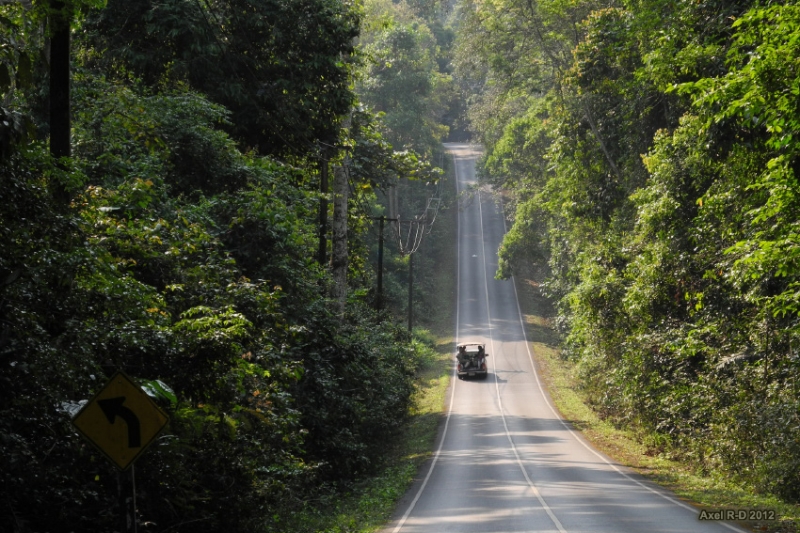
Image credit: Axel Drainville
For visitors staying in the Thai capital of Bangkok, Khao Yai National Park offers a great reprieve from the noise and activity. Although it can be enjoyed on a daytrip, spending at least a night, whether in a cute bungalow outside of the park or at a campsite within the park’s boundaries, is highly recommended. It’s worth noting that if you exit the park and return the next day, you will need to pay the admission fee again.
Many tour operators organise trips from the capital. You can also catch a bus independently to Pak Chong in Nakhon Ratchasima province. This is where you’ll find the main entrance to the national park and an abundance of tourist facilities. You can book national park trips from here, rent transportation, and find plentiful accommodation and dining options. The drive from Bangkok takes around three hours.
Do note that the park is huge and so you will need your own transportation if not visiting as part of a tour. Many independent visitors opt to rent a scooter, but this is strongly discouraged if you do not have comprehensive insurance and prior riding experience on mountain roads.
Hiking Trails
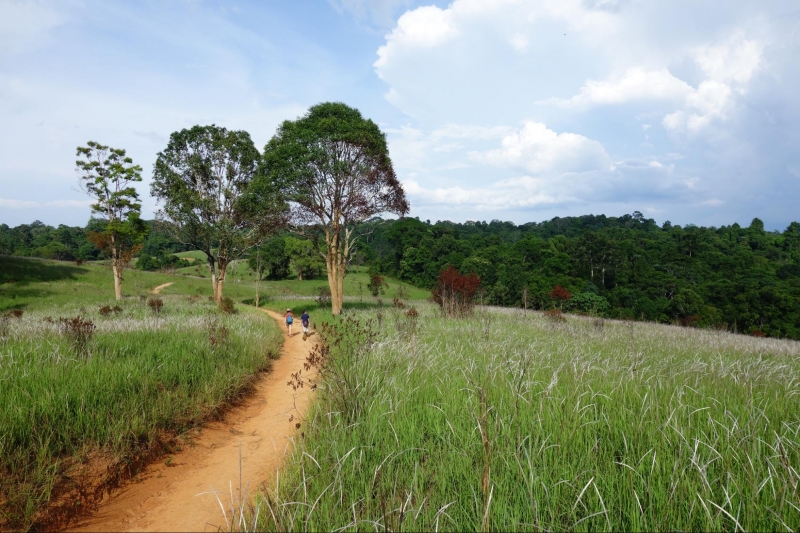
Image credit: Davy Demaline
The first national park in Thailand, Khao Yai National Park boasts many hiking trails of varying difficulty levels. Many of the shorter trails can be enjoyed independently. Routes are generally well marked and you can pick up maps from the Visitor Centre. If you want to venture deep into the jungle on a longer trek, though, you will need to go with a professional guide who knows the area. This is both for your own safety and to prevent harm to the natural environment.
Beautiful Views
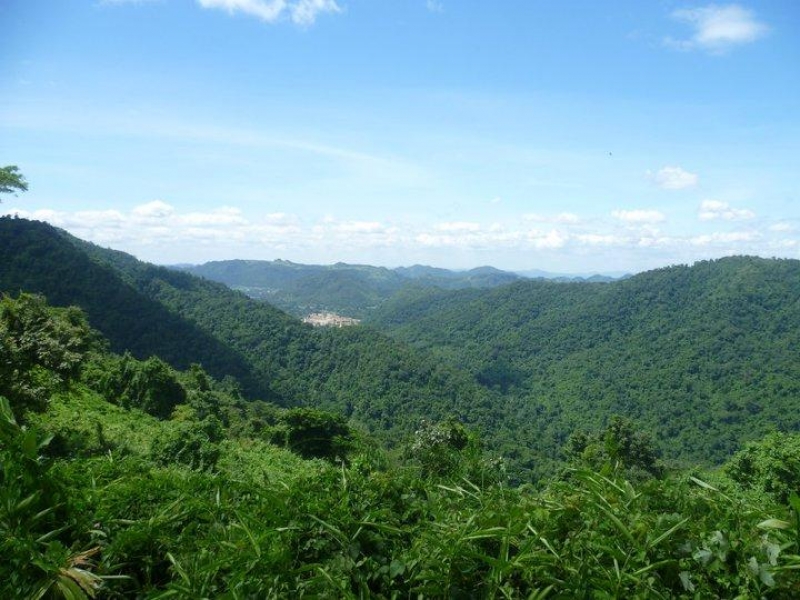
While many of the hiking trails lead along jungle paths, with dense foliage all around you, there are several viewpoints around the park that can be accessed by foot and by vehicle. Do note that if you’re driving, you should not randomly pull over to take pictures and admire the views; this can cause a hazard on the roads. Wait until you reach a parking area (there are several) where you can safely get out of your car (or off your bike) and wander around. Marvel at the patchwork of greenery that spreads as far as the eye can see, punctuated by mountains, hills, and bodies of water.
Stunning Waterfalls
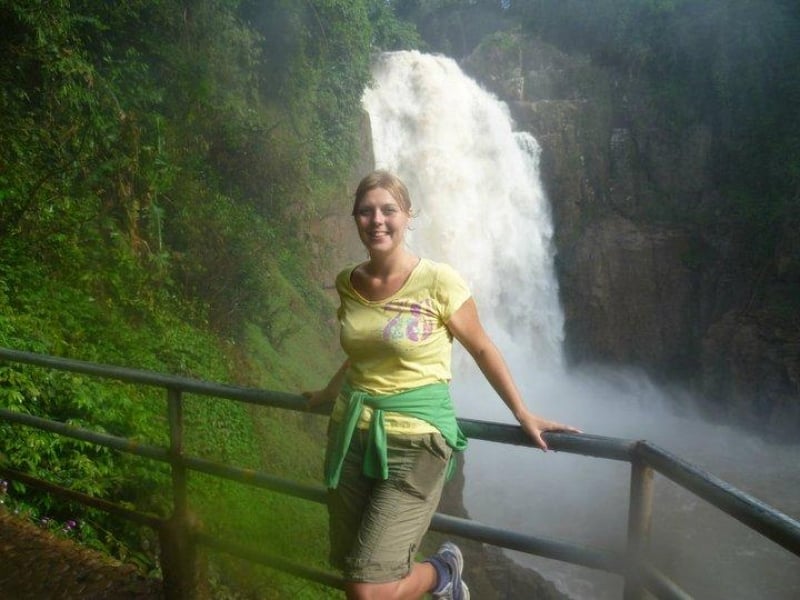
Khao Yai National Park boasts several splendid waterfalls. The biggest is the three-tier Haew Narok with water thundering down 150 metres to create a large splash and plenty of spray in the pool below. You can hear the roar of the water as you approach, the falls hidden from view by greenery as you follow the short (500-metre) trail from the road. Do take care going up and down the wooden steps as they can be quite slick from the waterfall’s powerful spray. There’s a wooden viewing platform at the bottom of the falls from where you can snap plenty of selfies. I heard quite a sad tale while visiting the national park about this being a deadly spot for wild elephants, with several magnificent beasts falling from the top of the falls each year.
The most famous waterfall of Khao Yai National Park is Haew Suwat, a 20-metre-high cascade that appeared in the cult film, The Beach. The viewing point is located around 100 metres from the road and, as with Haew Narok, you can hear the crashing water before the waterfall comes into view. The rocky viewing area is at the bottom of the falls and there is a trail that leads to the top if you want to peer over for a different perspective.
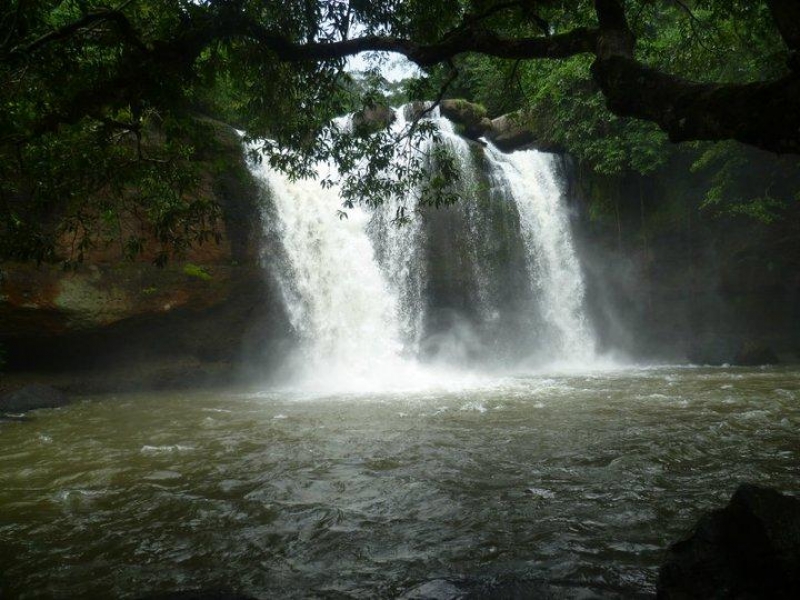
Sarika Waterfall is located within Nakhon Nayok province, quite far from the park’s main entrance but still within the park’s boundaries. You can scramble up the large rocks alongside the waterfall for different views. This fall tends to run quite dry during the dry season, reduced to a fairly small trickle. I visited this waterfall in the dry season, though, and was still pretty impressed by the natural surroundings.
Haew Sai Fai is a lesser-visited fall in the park, meaning that those who make the effort to visit will be able to enjoy the beautiful natural setting in relative peace and quiet and away from the crowds. No floating heads in your pictures! You need to hike for around a kilometre to reach this particular waterfall, and it’s recommended to go with a guide to prevent getting lost. It’s a fairly small fall, but the peaceful atmosphere and lack of other tourists make it appealing for fans of nature.
Other waterfalls within the park include Pha Kluaymai and Haew Pratoon.
Abundant Bird Life
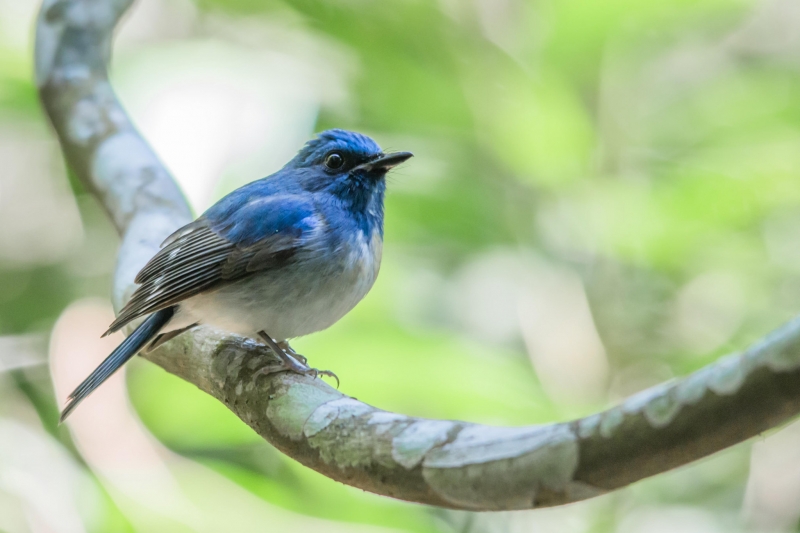
Image credit: Rushen
Khao Yai is home to many species of birds, with big and small varieties filling the air with chattering, singing, warbling, tweeting, and calling. There are those that make their homes in the tree branches and those that live in the undergrowth. Although I didn’t see one while I was visiting Khao Yai National Park, it’s said to be one of the best places in Thailand to spot a magnificent hornbill. I’m not an avid bird watcher so I have no idea what types of birds I did actually see (though there were many!), but interesting birds that live in the jungles include cuckoos, pitas, pheasants, broadbills, and nightjars.
Plenty of Wildlife
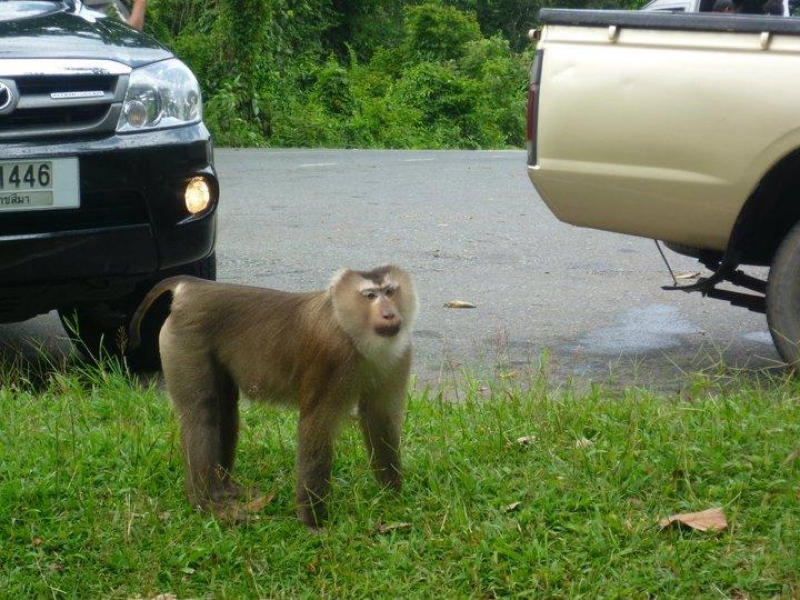
In addition to birds, a variety of other creatures also live in Khao Yai National Park. It’s one of the best places in Thailand to spot wild elephants. Sadly, this is usually because of people encroaching on their natural territory and developments eating into their habitat. If you do see a wild elephant, do keep in mind that they are dangerous animals and do not approach them. I did not see any elephants and, honestly, I’m quite thankful for that! It was a fear of mine that we would come across an irate elephant while driving along the twisting and turning mountain roads. For some people that would be a dream; for me, however, it would be terrifying!
Animals that you are unlikely to see, but live in the park, include bears and cloud leopards. Though they once prowled the lands, it is believed that there are no more wild tigers in Khao Yai National Park. You might spot gibbons and macaques as they can be found in abundance. The cheeky creatures are used to seeing people and traffic and will approach parked cars looking to scavenge for food. It’s also pretty common to spot deer and squirrels. There are many types of snakes, rodents, insects, spiders, and butterflies too.
One thing I wish I’d done while at Khao Yai, but didn’t, was to join a nighttime hike. I only explored during the daylight hours, but night hikes are a great way to see different creatures and enjoy a totally different atmosphere. Plan your trip to Khao Yai National Park and you’ll almost certainly agree that it deserves its reputation as a Thai treasure.




